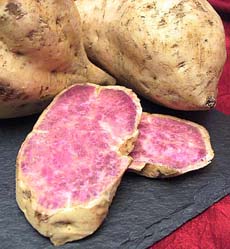 Want something new and exciting for dinner? Try these lavender Okinawa sweet potatoes...or the dozens of other exotic and heirloom vegetables we present for your consideration. Photo courtesy of Melissas.com. Want something new and exciting for dinner? Try these lavender Okinawa sweet potatoes...or the dozens of other exotic and heirloom vegetables we present for your consideration. Photo courtesy of Melissas.com.
|
ELIZABET TRAVIS is an Editorial Intern at THE NIBBLE.
|
|
July 2008 |
 |
Product Reviews / Main Nibbles / Vegetables
A Glossary Of Exotic & Heirloom Vegetables
Page 9: Exotic & Heirloom Legume Types
CAPSULE REPORT: This is Page 9 of a 15-page glossary of a glossary of exotic and heirloom vegetables. Click on the black links below to see other pages.
We will keep adding to this glossary of legumes.
| Legumes |
Get To Know Me |
Chinese Long Bean
This is a long, thin Asian bean that can measure from one to three feet in length. It has a mild taste, similar to a string bean, and is grown in a variety of colors (see the red variety below). The Chinese long bean is not as crisp or moist as a string bean, so avoid overcooking; it will become mushy.
Available year-round. |
 |
Chinese Red Long Bean
This is the red variety of the Chinese long bean. It has a slightly stronger flavor, and adds depth of color to any dish.
Available in September. |
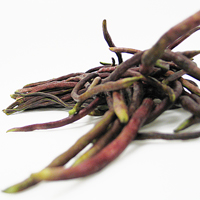 |
Soybean
The soy bean is native to East Asia, and is used to make many Asian food staples, including tofu, miso and soy milk. The bean grows in various sizes and hull colors that include green, black, brown and yellow. In the U.S., frozen cooked green soybeans, edamame, are available as a snack in Japanese restaurants, and can be found frozen in many supermarkets. They can be served as a vegetable and used as a garnish, in salads, omelets, etc. |
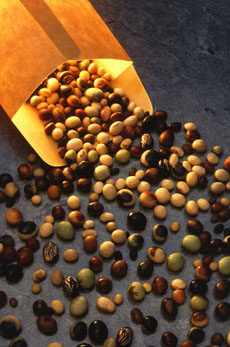
Photo by Scott Bauer, U.S. Agricultural Research Service. |
Sea Bean
This bean literally comes from the sea. It is long and pencil thin, with a flavor that reflects its origin. It may taste salty or even fishy, but becomes more mild in flavor when soaked. It brings excitement to stir-frys with tofu and/or vegetables.
Available year-round. |
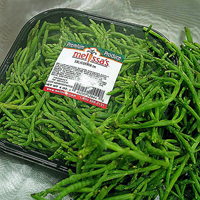 |
Snow Peas
Prominent in Chinese cooking, snow peas have a bright, flat, green pod, and are best when picked young and crisp. It is sweet and tender, and can be eaten in its entirety (unshelled), raw or cooked.
Available year-round. |
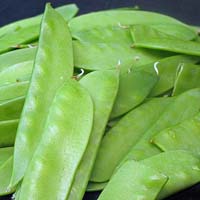 |
Continue To Page 10: Mushrooms
Go To Article Index Above

|









